Long Island: The Cradle of Aviation
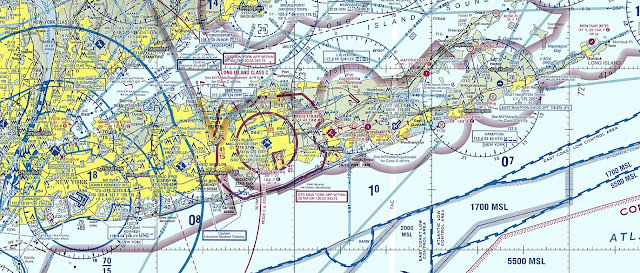 |
| From LaGuardia to Montauk, Long Island is dense with airports but, unbelievably, not as much as it once was. |
I know what you're probably thinking. Cradle of aviation? Long Island? Isn't that a long way from Dayton, Ohio or Kill Devil Hills, NC?
To be clear, controlled, heavier than air flight was not born on Long Island. However, it thrived there in its infancy. In 1909, the “fastest man on Earth” and Wright Brothers nemesis Glenn Curtiss came to the Hempstead Plains. This portion of what is now Long Island’s Nassau County was a veritable east coast prairie perfect for the establishment of flying fields. In 1911, an adventurous soul named Cal Rogers launched from Long Island in a Wright Biplane converted into a flying billboard to “successfully” complete the first coast to coast flight. The same year, hitherto unknown Italian immigrant Giuseppe Bellanca designed, built, and flew the first of many aircraft that would carry his name. His first flight from Mineola Field on the Hempstead Plaines soon led to Bellanca founding a flight school there. Long Island company American Aeroplane Supply House was established in 1911 to build various French Bleriot models, starting what became a decades-long legacy of aircraft manufacturing on the island. Long Island's Moisant Aviation School proudly trained female aviators with Harriet Quimby, the famous purple-suited aviatrix from Michigan, becoming the first woman in the United States to earn a pilot certificate. In 1927, Charles Lindbergh departed Long Island’s storied Roosevelt Field for Paris in a modified Ryan single engine aircraft, combating fatigue and weather to achieve the first successful solo flight across the Atlantic Ocean. During World War II, aviation giants Republic and Grumman fabricated prodigious numbers of fighter aircraft to tip the balance of power in favor of the Allies. Republic built more than 9,000 P-47 Thunderbolts in Farmingdale, NY during the war. The Grumman "Ironworks” was responsible for the Hellcat, the most successful American naval fighter of World War II with an unmatched victory to loss ratio of 19:1. In the 1960s, Grumman designed and built the Lunar Module that bore US astronauts to the surface of the moon. Grumman went on to build one of the best naval fighters of all time and the true star of the original Top Gun film, the F-14 Tomcat.
Over many decades of the twentieth century, Long Island played a key role in aviation from pilot training and early aeronautical record setting to significant contributions to America's World War II "arsenal of democracy" to conceiving and building the first and thus far only spacecraft to land men on a different celestial body.
Homecoming
For Scott, a flight to Long Island was also a journey home. While our main goals were to visit the Cradle of Aviation and American Airpower Museums, Scott was determined to share an authentic "Lawn Guyland" experience with us that included dreadful traffic, breakfast sandwiches, and what he purports to be the only decent pizza in New York the United States the world.
| Date | Aircraft | Route of Flight | Time (hrs) | Total (hrs) |
| 09 Jul 2022 | N21481 | SDC (Sodus, NY) - FRG (Farmingdale, NY) - SDC | 4.7 | 2478.7 |
As a result, Sean and I found ourselves in Warrior 481 flying over the mist-shrouded Catskill Mountains early on the morning of July 9. After all, we had to reach Long Island at a reasonable hour for breakfast sandwiches.
Scott and Kim departed the day prior in Eight Five X-Ray and stayed overnight with Scott’s family on the island. They planned to meet us on landing with ground transportation.
Our destination was Republic Airport in Farmingdale, NY (KFRG). Though it only serves general aviation, it is often touted as the third busiest airport in New York State behind JFK and La Guardia. I think of it as New York’s version of my hometown airport, Oakland County International (KPTK). The airport was once home to Republic Aviation, but only a single Republic hangar remains on the site after the division was shuttered by Fairchild in 1987. That hangar houses the American Air Power Museum and lots of memories of the former aircraft manufacturing powerhouse.
For the sake of practice, we flew on an IFR flight plan and received at least two re-routes as we reached the metropolitan New York area. The experience served as further verification of the truism that no route survives contact with New York Approach. [Note to self: in the future, do not alter the end waypoint of an active leg in the navigator or else the airplane will make an abrupt turn to intercept the new leg rather than flying direct to the new waypoint.]
It was my first time flying with Sean, who recently joined the Williamson Flying Club as a certificated pilot with most of his prior experience in Cessnas. We had an enjoyable flight south and got to know each other along the way. Sean got bonus points for his Detroit Red Wings shirt.
We went feet wet over Long Island Sound around 9:00 am. Republic was not especially busy when we arrived, but we were sent on an extended downwind over the south shore of Long Island to accommodate an inbound Pilatus. When we were turned back toward the airport to land, it was against a healthy quartering crosswind.
 |
| Scene from a brief morning tour of Long Island’s south shore. |
After landing, we taxied onto the Sheltair ramp where I was gratified to see Eight Five X-Ray parked and waiting. Scott and Kim arrived a few moments later in Scott’s brother’s car.
The Long Island Experience
Driving the Southern State Parkway, I was reminded of why I was so gleeful to leave Metro Detroit in the early 1990s. Traffic was obnoxious and though the parkway with its low arching stone bridges and ridiculously truncated acceleration lanes looked nothing like Detroit of three decades ago, the driving behavior was very similar.
We stopped at a deli for breakfast sandwiches, which were delicious, though neither Sean nor I could bring ourselves to order them with ketchup as recommended by Scott. Thus branded as ignorant out-of-towners, ordering did not go as smoothly as I would have hoped. Frankly, I had an easier time ordering food in Germany and the Czech Republic earlier this year. But the sandwiches were excellent and Scott's point about the rolls being a critical part of the overall balance of the meal was well made.
Cradle of Aviation Museum
The Cradle of Aviation Museum is located in the orphaned buildings of Mitchel Field that served as an Air Force base from 1929 to 1961. While the airport itself has been largely wiped from the earth, the old hangars remain.
 |
| An ungainly-looking Grumman OV-1 Mohawk is displayed outside. |
 |
| It evidently has to be a "historic district" because the airport itself is long gone. |
The Cradle of Aviation Museum seeks to tell the story of Long Island's many contributions to aviation history. It celebrates the people and companies of the region that nurtured aviation through much of the twentieth century.
Standing proudly before the museum is a bronze statue of Dr. Sally Ride, physicist, astronaut, and the first American woman to journey into space. It was just unveiled in June 2022.
As a focal point, the main entrance of the museum features a large glass atrium with Long Island relevant artifacts on display. The jet is a Grumman F-11 Tiger, a carrier-based Navy fighter. Tigers were flown by the Blue Angels from 1958-1967 and this example reproduces the paint scheme of the aircraft flown by Blue Angel Norm Gandia, a native Long Islander.
As an Air Zoo docent, my favorite story about the F-11 Tiger was that it was the first jet aircraft to shoot itself down. After a short burst from the guns while in a shallow dive, the unfortunate Tiger caught up to its own rounds, ingested them into the engine, and experienced a forced landing.
This angle on the Tiger shows how the fuselage tapers at the wings in adherence to the "area rule" for reducing drag at transonic speeds. The Tiger was the second carrier-based naval fighter capable of supersonic flight and one of the first US aircraft designed to incorporate the area rule's Coke bottle fuselage taper.
Fleet Model 2 biplanes served as primary trainers at Roosevelt Field, home to one of the most prolific civilian aviation schools of the 1930s.
Heavy Artillery
The first hangar we visited featured a Fairchild-Republic A-10 Thunderbolt II that is best known for its seven barrel 30 mm Gatling gun capable of firing 4200 rounds/minute. It was built to be a tank buster. Just behind the airplane is visible the famous armored "titanium bathtub" that surrounded the cockpit and protected A-10 pilots from hostile fire.
 |
| Scott posing with the A-10. |
The Cradle of Aviation Museum is so thorough that it even features an actual Long Island-born pilot!
During my time at the Air Zoo, Grumman was a significant focus given that the museum was the first in the world to collect airworthy examples of all four WWII-era Grumman cats (Wild-, Hell-, Bear-, and Tiger-). Because of Grumman, Long Island entered my consciousness as a young Midwestern museum docent in 2000 who, at the time, had no clear idea of how to find Long Island on a map.
The Grumman F-14 Tomcat on display is the oldest Tomcat in existence and was the third prototype constructed (which explains the unusual vanes and probes on its extended pitot mast). This Tomcat famously underwent testing to assess the aircraft's flight capabilities should the variable sweep wings deploy asymmetrically. These tests led to a famous photograph of this Tomcat in flight with the right wing locked in the full forward position while the left wing was tucked back in a highly swept configuration. I suspect flying in that configuration required a lot of rudder.
Beside the Tomcat -- one of Grumman's most beautiful designs -- stands one of the company's most unusual, the A6 Intruder. Do not be fooled by the ungainly appearance. The Intruder was a rugged, high-tech, capable ground attack aircraft.
This particular Intruder was one of three prototype F-models built in 1987. It came with a $220 million price tag per aircraft.
I was intrigued by the complexity of the wing hinge. And check out that stout tail hook!
 |
| It looks like something might be missing here. |
Also on display is the nose section from the first Boeing 707 operated by El Al Israel Airlines. On June 15, 1961 the aircraft set two simultaneous world records. The first was a non-stop distance record for a scheduled commercial flight of 5760 miles between New York and Tel Aviv. That was paired with a speed record for accomplishing this feat in 9.5 hours. When it retired, it had carried 2+ million passengers over 36 million miles without incident.
This all begs the question: what happened to the rest of the airplane? At least Sean got to ham it up in the left seat. (With apologies for the crummy, blurry picture that is not up to my normal standards. Even so, Sean is clearly enjoying himself here.)
Gone, But Not Forgotten
The museum features a look back at Pan Am Airlines that operated from 1927 to 1991. Because weird things catch my eye, I momentarily fixated on this logo.
What I initially mistook for a tissue paper mosaic of the type I made as a kindergartener turned out to be a sculpture fashioned from little plastic airplanes and Pan Am wings that would have been given to child passengers.
Hempstead Plains
Originally established as the Hempstead Plains Aerodrome in 1916, this airport was also known as Hazelhurst Field and, ultimately Roosevelt Field in honor of Theodore Roosevelt's son Quentin, killed during WWI air combat. This famous Long Island Airport operated until 1951. It was known for early civil flight training, for instructing military pilots during WWI, and as a place that attracted many aviation pioneers of note (e.g., Bellanca, Corrigan, Earhart, Fonck, Lindbergh, Pangborn, Post, Seversky, Sikorsky, Thaden, etc.). In 1919, a British airship arrived at Roosevelt Field after making the first air crossing of the Atlantic Ocean by flying east to west. Conversely, it was the departure point for Charles Lindbergh's groundbreaking 1927 solo transatlantic flight to Paris.
In true American style, storied Roosevelt Field is now a shopping mall.
 |
| Replica of the Herring-Curtiss Golden Flyer. |
Glenn Curtiss' Golden Flyer was the first aircraft to successfully fly from Long Island. On that flight in July of 1909, it became the snowball that started an aeronautical avalanche on Long Island. Perhaps the Hempstead Plains should have been renamed to Hempstead Planes.
A young Giuseppe Bellanca arrived in 1911 with a monoplane that he designed and built in the back of a Brooklyn bakery. Powered by a 30 HP, three-cylinder Anzani radial, additional copies of this simple aircraft established the training fleet for the flight school Bellanca started on the Hempstead Plains. One of Bellanca's first students was Fiorello LaGuardia, future mayor of New York City and namesake for the commercial airport that everyone loves to hate.
 |
| Vin Fiz replica. |
In 1911, Cal Rogers became the first private citizen to purchase a Wright aircraft. It was a Model EX biplane (a modified Model B) that Rogers intended to fly from Long Island, NY to Pasadena, CA. His goal was to seize the $50,000 prize offered by William Randolph Hearst for the first transcontinental US airplane flight conducted in 30 days or less. Rogers found a sponsor in Armour ("Hot dogs, Armour hot dogs!"), makers of a new grape soda called Vin Fiz ("The Ideal Drink") and transformed the Wright aircraft into a flying billboard. Armour provided financial support and a ground support team that rebuilt the Vin Fiz after each of its 15 crashes along the way to California. Repairs were so extensive that little of the aircraft that departed Long Island actually arrived in California. The Vin Fiz launched on September 17, 1911 and reached Pasadena 49 days later. It was 19 days too late to collect the Hearst prize, but the stunt captured American enthusiasm nonetheless.
There is no mistaking the purple-clad aviatrix as anyone but Harriet Quimby, who became the first woman to receive a US pilot certificate in 1911. She trained in a Bleriot XI at the Moisant Aviation School on the Hempstead Plains. While Moisant deserves kudos for inclusivity, it is noteworthy that Bessie Coleman, the first certificated Black female aviator, had to journey all the way to France to receive her flight training.
The Bleriot XI gained fame in 1909 when creator Louis Bleriot became the first to fly his muslin-skinned contraption across the English Channel. The example on display was the first aircraft ever imported into the United States, an original French-built Bleriot XI that is likely one of the oldest aircraft still existing in the world. Bleriot’s designs were mass produced on Long Island by a pair of companies, Moisant and the American Aeroplane Supply House.
The Great War
 |
| Lindbergh's Jenny. |
No early flight collection would be complete without a Curtiss JN-4D or "Jenny", the plane responsible for training many American WWI aviators.
In 2005, Kristy and I made our first long cross country flight together in Warrior 481 between South Haven, MI and Fort Myers, FL. Along the way, we stopped in Americus, GA for a break and discovered a historical marker describing how Charles Lindbergh came to Americus in 1923 and purchased his first airplane for $500, a WWI surplus Jenny.
Somewhat incredibly, this is that airplane.
This Breese Penguin was built in Farmingdale, NY in 1918 and is the sole surviving example of its kind. Someone in our party observed, "Aren't the wings a little short?" As it turns out, that was actually the point. Appropriately named for a flightless bird, the Penguin was built as a non-flying aircraft trainer meant to give students the feel of an airplane travelling near flying speeds without presenting any risk of actually becoming airborne.
A portion of the museum was decked-out as a World War I era airplane manufacturing suite complete with a partially constructed Curtiss Jenny.
 |
| Curtiss OX-5 liquid cooled engine of the type paired with the Jenny. |
Let's face it, the mannequin doing this work does not appear to be making much progress.
 |
| A rotary engine (note the single valve per cylinder) of the sort definitely not paired with the Jenny. |
 |
| A Curtiss OXX-2 pusher engine designed for seaplanes. |
Sperry Corporation was a Long Island firm best known for inventing the gyroscopic artificial horizon (of the general type that failed on me in the clouds in 2017) and the autopilot. Early on, they built airplanes on Long Island like the Sperry Messenger intended to replace motorcycles for carrying messages. This example is a museum-fabricated replica constructed from original plans.
Two Classics Paired Together
The Curtiss Robin first flew in 1928 and is displayed here mated with a genuine pair of EDO floats. It does not get much more classic than that.
Was It Two Barks for Yes?
When I was a kid, I was enthralled by a short-lived TV show called "Tales of the Gold Monkey". It starred Stephen Collins as Jake Cutter, owner and operator of a Grumman Goose (Cutter's Goose) who had adventures in the south Pacific in the years immediately prior to World War II. The show was clearly attempting to cash in on the "Raiders of the Lost Ark" aesthetic with bomber-jacketed derring-do. Personally, I thought that the airplane was just about the coolest thing this side of the Millennium Falcon. I was evidently alone in that assessment because nobody seems to remember this show. Having watched an episode as an adult, I now understand why it only lasted one season.
I was describing this to Sean when Scott (evidently, the only other person on the planet who remembers this show) suggested I read the accompanying placard. The Goose before us in Pan Am livery was the very airplane that portrayed Cutter's Goose.
This completely made my day.
One of the little details that jumped out at me: the serifs on every letter pointed aft, regardless of which side of the fuselage one looked at. It was as though they were all being blown back by the relative wind.
This blog would be much more difficult to make if I had to use cameras like these.
Grumman Goes To War
The Grumman F3F was a Navy biplane built in the mid-1930s and retired prior to World War II. It was the last biplane fighter produced in the United States. Though the Navy initially passed on Grumman's next offering, the Wildcat, Grumman would go on to become a powerhouse aircraft manufacturer on Long Island during WWII.
F3Fs are exceptionally rare. This example is a plans-built replica constructed by the Cradle of Aviation Museum.
After retiring the F3F, the Navy turned to the Brewster F2A Buffalo monoplane for its next front line fighter. Incidentally, the Buffalo was also manufactured on Long Island. Performance of the Buffalo was disappointing, however. While it outperformed the Grumman F3F biplane that it replaced, it was a poor match against Japanese Zeros. The example on display is an exacting replica manufactured by the museum.
The Buffalo was withdrawn from service and replaced by an improved Grumman F4F Wildcat in 1940. Borrowing the same landing gear and fuselage from the F3F, the Wildcat was an all metal monoplane that outperformed the Buffalo despite still struggling against Japanese fighters from 1941 onward. Nonetheless, tactics like the Thach Weave allowed the Wildcat to achieve a positive victory to loss ratio against the Japanese.
Grumman rectified the shortcomings of the Wildcat by introducing the F6F Hellcat in 1943. Powered by a Pratt & Whitney R-2800 18 cylinder, 2000 horsepower radial engine (the same engine mated to the Corsair and the Republic P-47 Thunderbolt), it had the power, speed, maneuverability, and armor to effectively counter the Japanese Zero. Known as the "Ace Maker", the Hellcat boasted a 19:1 victory to loss ratio in the Pacific.
At peak production during 1944, the Grumman facility on Long Island was building one Hellcat per hour for a total of 644 per month; an impressive example of how the United States flexed its manufacturing might during World War II.
The Grumman TBM Avenger was first unveiled to the public on the auspicious date of December 7, 1941. It was dubbed the Avenger in response to the events of that day. It served as a highly successful, carrier-based torpedo bomber and looked very much like a big Hellcat. As a World War II aviator, former President George HW Bush was shot down in his Avenger, Barbara, on September 2, 1944. Bush was the only member of the three man crew to survive ditching in the Pacific.
Republic Aviation's significant contribution to the World War II effort was the P-47 Thunderbolt produced at the very field where Sean and I landed that morning. The heaviest single seat American fighter of WWII, the P-47 was renowned for taking a lot of punishment and bringing its pilots back home
WACO cargo gliders were used extensively on D-Day to transport troops to the surface in groups rather than scatter them across the countryside. This example allowed a look inside a glider packed with troops bound for combat. The facial expressions on some of the soldier mannequins were hilarious.
Also Hailing from Long Island
What I mistook at first glance for an Aeronca Champ was actually a 1946 Commonwealth 185 Skyranger, a side-by-side two seater built in Valley Stream, NY on Long Island. Only 275 Skyrangers were built and Commonwealth entered bankruptcy in 1947 after betting on a post-WWII civilian aviation boom that was smaller than expected.
Gyrodyne of St James, NY produced the Model 2C in 1952 as a proof of concept demonstrator for how two sets of coaxial, counter-rotating blades eliminated the need for an antitorque rotor. The helicopter could seat six, making it the largest helicopter ever built on Long Island.
 |
| A Republic F-84 Thunderjet. |
To Infinity and Beyond!
California-based Rockwell produced the three-person Command Modules for the Apollo space program. This example was launched by rocket to an altitude of 24 miles after which the rocket was intentionally caused to tumble. This was done to verify that the automated escape system would separate the Command Module from the rocket and safely deliver it (and its crew, if it had one) back to Earth by parachute.
Grumman received the contract to design and build the Lunar Module (LM, pronounced "lem") for the Apollo program that would carry astronauts to the surface of the moon and back to the orbiting Command Module for return to Earth. This example was actually used during astronaut training and is mocked up as though under construction in a Grumman cleanroom.
LM13 was intended to fly to the moon as a part of either Apollo 18 or 19, but those missions were cancelled and the LM found itself back home on Long Island. This is the real deal, a bona-fide production space ship.
Also on display was an engineering mock-up / demonstrator of the LM that was used to collect input from astronauts and finalize the design of the LM.
Finally, every astronaut that piloted the LM had to learn somewhere. They did so in this simulator built as a joint venture between Grumman and Binghamton, NY-based Link, makers of the famous WWII blue box Link instrument trainers. Every LM pilot started right here, in this very simulator.
 |
| Back half of the LM simulator. |
 |
| LM simulator control console. |
American Airpower Museum
When we finished at the Cradle of Aviation Museum, we experienced some more authentic Long Island traffic en route to some authentic Long Island pizza. Was the pizza worth the hype? It was fine. I still prefer Erbellis in Kalamazoo. (Shhh...don’t tell Scott.)
The American Airpower Museum is established in the last remaining hangar of the former Republic Aviation company at Republic Airport, right next to Sheltair where Warrior 481 and Eight Five X-Ray were parked. This was my second visit to the museum. While Airpower also celebrates Long Island aviation history with an obvious emphasis on Republic, its primary distinction is that much of the WWII collection actively flies.
The nose art on this B-25 identifies it as the aircraft that served as an executive transport for General Hap Arnold and his staff during World War II. After the war, this aircraft was purchased by Howard Hughes before eventually coming to the American Air Power Museum. It is claimed to be the oldest B-25 flying today. I can attest to the fact that it flies; I first laid eyes on it during the Greatest Show on Turf in 2010.
 |
| Nose to nose with the B-25. |
Currently under restoration is the Republic F-105 Thunderchief, more commonly known as "The Thud". When the F-105 first entered service, the Mach 2 fighter/bomber was the largest single-seat single-engine combat aircraft ever introduced.
A Grumman Avenger torpedo bomber like the one at Cradle of Aviation. The primary differences are that this one not only flies, but bears the signature of Avenger pilot and former President George HW Bush.
Something was fishy with this sign. While the directions to the rest room were spot-on, the pictured C-47 was facing north, suggesting that London was vaguely in the direction of Seattle with Pearl Harbor somewhat north of that.
Sean and I took a moment to climb into the airworthy Douglas C-47.
One has to give "props" to one of the most utilitarian aircraft ever built!
Looks like someone forgot to use Camguard. Yeesh. I believe this used to be a V12 Allison 1710 of the type that powered the Curtiss P-40 Warhawk.
 |
| A North American T-6 Texan advanced trainer. |
Speaking of the Curtiss P-40 Warhawk, there she is! Built in 1943 by the Curtiss plant in Buffalo, NY, this P-40 flew for the Royal Canadian Air Force in defense of Canada's west coast during World War II.
Now known as the Jacky C, the P-40 is a staple at East Coast airshows.
For a truly classy golden age experience, rides are available in this WACO UPF-7 biplane. This is an original model of the type still being built in Battle Creek, MI.
The American Airpower Museum has three flight-ready L-39 Albatros military trainers built in Czechoslovakia. The middle ship formerly bore Russian markings that were swapped for the Ukrainian Trident following Russia's invasion of Ukraine in 2022. This was the American Airpower Museum's small way of thumbing its nose at Putin.
I think that a ferocious Bear is the best possible logo for an aggressor squadron. Ask me how I know.
Rides are also available in this beautifully maintained North American SNJ, the naval version of the T-6.
The docent seemed concerned that the name on this SNJ, Thunder Pussy, might be considered offensive by some museum visitors. Considering that we were at Republic, builders of the Thunderbolt, Thunderjet, Thunderstreak, Thunderchief, and even the ill-favored Thunderscreech, I thought the name was more or less on brand.
This is my parting shot of the American Airpower Museum, a final postcard featuring a P-51 Mustang and the P-40 Warhawk. It really is just a big hangar full of flying toys.
Unanticipated Solo
 |
| North side of the Sheltair facility. |
Back at Sheltair, I decided to pay the $15 daily parking fee rather than purchase multiple gallons of fuel at $9.15/gal. While paying, I set my Canon camera on the counter.
"Is that an actual digital camera?" asked the college-aged girl working the counter. From her tone of disbelief, it was as if I'd brandished one of those 50 lb cameras we saw at the Cradle of Aviation Museum. Until someone can cram a 30x optical zoom into an iPhone, I plan to keep using my camera!
The line crew had pulled Eight Five X-Ray away from the fence to facilitate departure. In the wake of some allergy-related sinus issues, Scott wanted another pilot on board Eight Five X-Ray for the flight back to Sodus as a precaution. Sean agreed to fly back with Kim and Scott, leaving me solo in Warrior 481.
 |
| WFC's Eight Five X-Ray and Warrior 481 on the Sheltair ramp. |
 |
| Me, Kim, Sean, and Scott on the ramp at Sheltair. |
"Wait! We need a group picture!" Fortunately, the line crew were standing by and ready to assist.
When the line guy noticed Sean's Detroit Red Wings shirt and asked him if he'd ever seen a game at "The Joe", I nearly fell over. This was not something I expected to hear so far away from home.
 |
| Looking toward Republic Tower while holding short of runway 19 on taxiway G4. |
Republic Clearance declined to put me in for flight following back to Sodus, indicating that New York Approach preferred those requests to be negotiated in the air. But he was happy to provide me with the correct frequency to call once airborne. From there, I was given an intersection departure on runway 19 from taxiway G4 such that I effectively departed directly from the Sheltair ramp.
Before I was cleared for take-off, a Cirrus on the other side of the runway was told to "line up and wait" on the end of runway 19. Then, despite the Cirrus already sitting on the runway waiting for takeoff, Tower cleared me to depart. When Scott and Sean were cleared to depart directly behind me from the same intersection, the Cirrus pilot -- still sitting on the end of the runway and seeing two Cherokees launching ahead of him -- objected over the radio. Republic Tower politely told him to wait his turn.
 |
| Republic Airport looking toward the northwest. |
My first visit to Republic was in March 2011 and the green world below looked very different from what I remembered of that trip. The boat count in Northport Bay was significantly higher in July than March as well.
The distinctive "Stacks" from the Northport Power Station readily stood out as one of the best landmarks on the north shore of Long Island.
With Scott, Sean, and Kim directly behind me, I set off across Long Island sound at 6,500 feet as we were passed from sector to sector of New York Approach.
 |
| Norwalk, CT |
 |
| Stamford, CT |
We made landfall between Norwalk and Stamford flying a direct course from Republic to the Carmel VOR (CMK), then a left turn direct to home.
This was a great trip and I really appreciate that Scott proposed and organized it. I was genuinely drawn into Long Island's deep aviation history and particularly impressed by the rare treasures on display in the Cradle of Aviation Museum: the oldest Tomcat in existence, Lindbergh's Jenny, Cutter’s Goose, and an actual Lunar Module built with every intention of going to the moon. The American Airpower Museum held fewer surprises for me because I had been there before, but has a wonderful collection of well-maintained airworthy World War II aircraft. On top of it all, I got to meet a new WFC member and enjoy flying across New York state on a beautiful day.















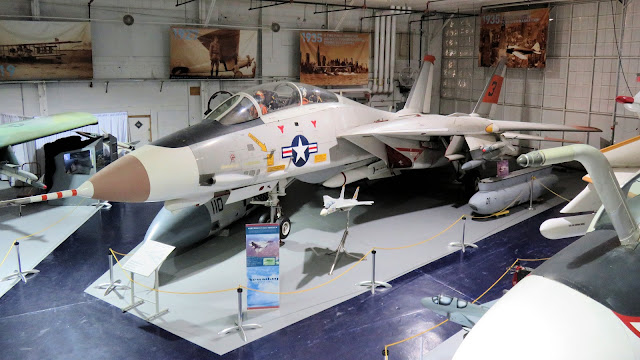
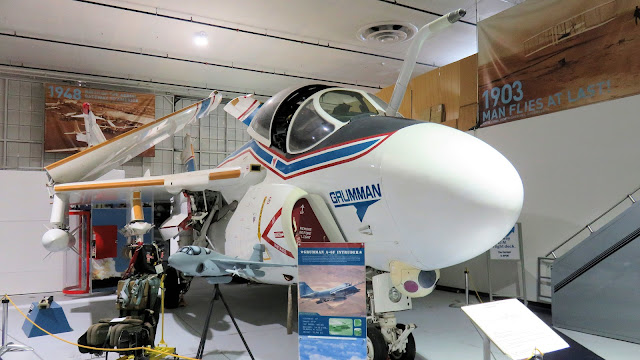








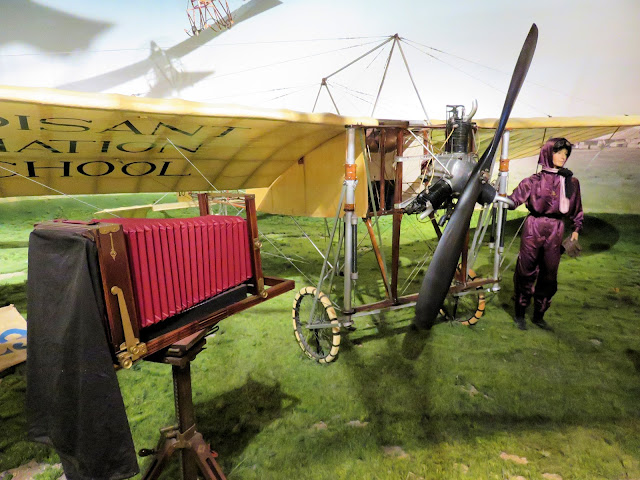



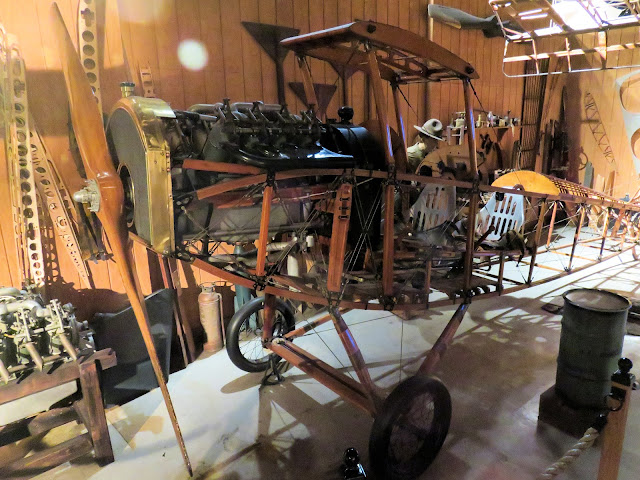

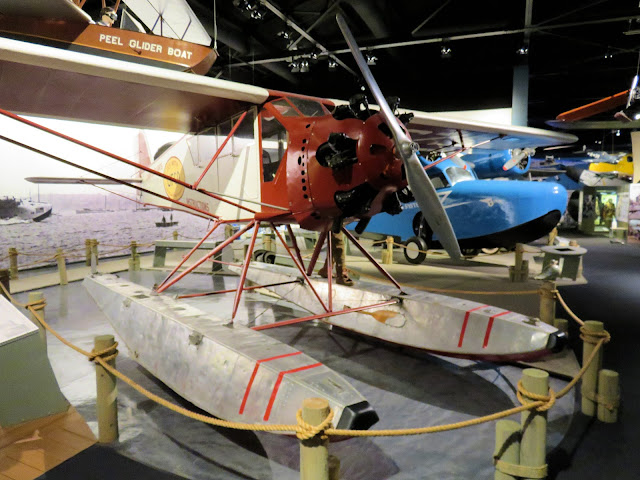

















































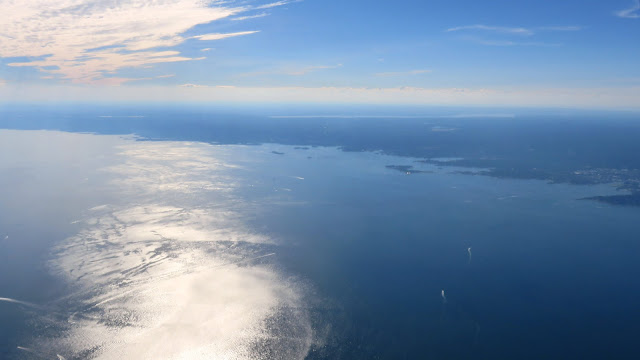


No comments:
Post a Comment